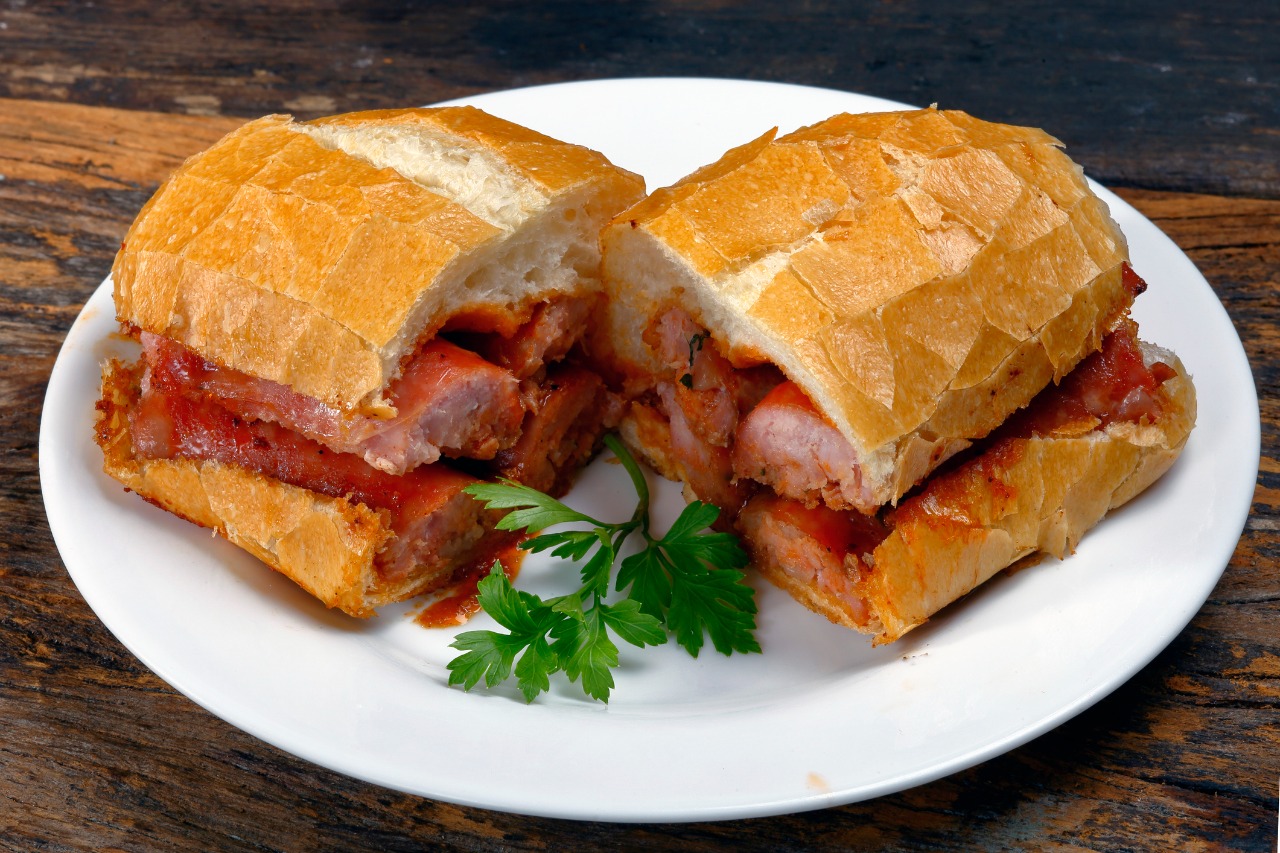Hoje é Dia dos Refugiados (20/6) e o Cartão de TODOS está lançando uma ação para promover o intercâmbio cultural entre os seus colaboradores, os contemplados pelo projeto Planeta de TODOS na Grécia e os seguidores das suas redes sociais: a Cozinha para TODOS!
Sabor e solidariedade rompem todas as fronteiras
Todos cozinham! Com essa máxima em mente, o Cartão de TODOS pediu a seus colaboradores que enviassem receitas de suas regiões para que fossem traduzidas para o inglês e compartilhadas com as pessoas contempladas pelo Planeta de TODOS.
A escolha pela culinária como facilitadora dessa troca entre culturas se deu por conta da natureza profundamente humana que nela se encontra: cozinhar e comer são atos de amor entre as pessoas. Em cada receita há algo de ancestral, de familiar e de expressão individual.
Além do intercâmbio cultural, a iniciativa busca revelar as diversas influências internacionais existentes em cada prato, do mais elaborado ao mais corriqueiro.
Posteriormente, será a vez dos contemplados pelo projeto dividirem algumas de suas receitas típicas com o público brasileiro e fechar esse círculo virtuoso, mostrando como cada cultura possui suas particularidades, mas também as suas influências e raízes em comum. Acompanhe ao longo dos próximos dias pelo Instagram.
Colocando a mão na massa
Confira a seguir três receitas que foram enviadas pelos colaboradores do Cartão de TODOS e entre nessa aventura gastronômica ao redor do Planeta de TODOS.
English Translation
Cartão de TODOS promotes cultural exchange through culinary
Today is the World Refugee Day (20) and Cartão de TODOS launches a campaign in order to promote cultural exchange among its collaborators. Planeta de TODOS’ beneficiaries in Greece and the social media followers: the Kitchen for All!
Taste and solidarity breaking all borders
Everybody cooks! Having this in mind, Cartão de TODOS have requested its collaborators to send some recipes from all regions in order to be translated into English and shared with Planeta de TODOS’ social project beneficiaries.
Culinary has been chosen to be a facilitator regarding the mentioned cultural exchange – indeed as a pure human nature: eating is an act of love among people! Each recipe contains something ancestral, familiar and an individual expression.
Besides the cultural exchange, this campaign seeks to highlight all the international influences that each dish provides, from chefs to streetfood.
Furthermore, it will be time for the beneficiaries to share their own typical recipes with the Brazilian audience. The idea is to explain each cultural particularity as well as its common influences and roots. Stay tuned next days on Instagram!
Going to action!
Find out three recipes that have been sent from Cartão de TODOS’ collaborators and jump into gastronomic adventure within Planeta de TODOS!
—
1. BOLINHO CAIPIRA

Quitute padrão de São José dos Campos/SP, o bolinho é marca registrada da cidade e já rendeu até reportagens na TV. Pouco se fala, no entanto, sobre como esse bolinho possui muitas semelhanças com o Accras, quitute à base de farinha de mandioca e milho cuja origem remonta à África Oriental e hoje muito apreciado no Haiti.
INGREDIENTES
MASSA
1/2 kg de farinha de milho amarela
1 l e 1/2 de água
2 cubinhos de caldo de carne
4 colheres (sopa) de óleo
2 colheres (sopa) de farinha de mandioca
RECHEIO
1/2 kg de carne moída
Cebola picada
Alho amassado
Salsinha e cebolinha picadas
Sal e pimenta-do-reino a gosto
MODO DE PREPARO
MASSA
Em uma vasilha junte as farinhas, vá misturando e desmanchando todos os grumos. Adicione o óleo e reserve. Ferva a água com o cubinho de caldo de carne. Derrame sobre a farinha aos poucos e misture bem, mexendo sempre até que a massa fique homogênea. Separe uma pequena porção da massa e achate-a na palma da mão.
Coloque dentro um pouco do recheio (carne temperada crua) e feche com a própria massa, dando o formato de um bolinho compridinho. Feitos todos os bolinhos, frite-os em óleo quente. Escorra-os em papel absorvente. Sirva-os quentes.
RECHEIO
Misture todos os ingredientes e utilize a carne bem temperadinha “crua”, pois se refogar antes fica seco.
ENGLISH TRANSLATION
Bolinho Caipira (Country Croquettes), traditional São José Dos Campos delicacy / São Paulo
São José dos Campos (SP) standard delicacy, this croquet connects to the city’s story and has been largely reported in local media. However, it is less spoken the fact it does has a lot of similarities with Accras, another delicacy made of cassava flour and corn whose origin is Eastern Africa e currently very much appreciated in Haiti indeed.
INGREDIENTS
DOUGH
1/2 kg of yellow cornmeal.
1 liter and 1/2 of water.
2 cubes of beef broth
4 tablespoons of oil.
2 tablespoons of manioc flour.
FILLING
1/2 kg of minced ground beef.
Chopped onion, crushed garlic.
Chopped parsley and chives.
Salt and pepper, at will.
HOW TO COOK
DOUGH
In a bowl, add the flour, mix it and break up all the lumps. Add oil and set aside. Boil the water with the cube of beef broth. Pour over the flour gradually and mix well, stirring constantly until the dough is smooth. Set aside a small portion of the dough, and roll it into the palm of your hand. Put a little of the stuffing inside (raw seasoned meat) and close with the dough, giving it the shape of a long croquette. Once all the croquettes are done, fry them in boiling oil. Drain them in absorbent paper. Serve hot.
FILLING
Mix all the ingredients and use well-seasoned, raw meat, otherwise they get dry when cooling down.
2. GALINHADA COM JILÓ

Mais um prato associado à culinária caipira, a Galinhada, com ou sem jiló, é um prato apreciado por todo o Brasil. Apesar de sua origem nacional, suas inspirações parecem ter relação com a paella espanhola, que cruzou o Atlântico e se transformou em nossa querida Galinhada ou mesmo no Arroz con Pollo cubano.
INGREDIENTES
GALINHADA
1 kg de coxa e contracoxa de frango temperadas a gosto
Azeite
1 colher (sopa) de açafrão
1 cebola média picada
4 xícaras de arroz tradicional ou de arroz bomba
Sal a gosto
JILÓ
8 jilós inteiros
1 cebola grande cortada em cubos
1 dente de alho socado no pilão
4 tomates cortados em cubos
Azeite
Sal a gosto
Pimenta-do-reino
MODO DE PREPARO
GALINHADA
Coloque, em uma panela, 2 colheres (sopa) de azeite extravirgem e deixe aquecer por cerca de 1 minuto. Acrescente as coxas e contracoxas separadas e temperadas. Deixe selar e, em seguida, vire-as para que a selagem ocorra do outro lado também. Após a selagem, acrescente a cebola picada e 100 ml de água e tampe a panela, deixando cozinhar até que a água seque. Repita o procedimento de colocar 100 ml de água e tampar a panela até que o frango esteja suficientemente cozido. Retire o frango da panela, tomando cuidado para não retirar a cebola. Desosse o frango e separe. Acrescente 1 colher (sopa) de azeite extravirgem e 1 colher (sopa) de açafrão e mexa. Cozinhe por 20 segundos. Tempere com sal ao seu gosto. Acrescente o arroz e mexa até o açafrão se misturar ao arroz. Acrescente o frango. Cubra com água e deixe cozinhar até o ponto do arroz estar do seu gosto. Sirva.
JILÓ
Refogue o alho e a cebola no azeite. Acrescente o tomate e mexa. Acrescente os jilós inteiro, sem cabo e, minimamente, sem pele. Tempere, ao seu gosto, com sal e pimenta do reino. Acrescente 100 ml de água e deixe cozinhar até que a água seque. Repita o passo 5 até o jiló cozinhar completamente. Retire da panela e sirva com o tomate por baixo e o jiló por cima.
ENGLISH TRANSLATION
CHICKEN WITH BRAZILIAN OKRA (SCARLET EGGPLANT)
Another dish connected to Brazilian countryside, the “Galinhada”, with or without okra, is definitely a nationwide famous dish. Despite its local origin, its inspiration seems to be very familiar to the Spanish Paella, that crossed the Atlantic Ocean and has become our dear “Galinhada” or even the Cuban chicken rice.
INGREDIENTS
GALINHADA (BOILED CHICKEN):
1 kg of chicken leg and cuts, seasoned at will
Oil
1 tablespoon of turmeric
1 medium onion, chopped
4 cups of traditional rice or bomb rice
Salt at will
BRAZILIAN OKRA
8 whole brazilian okras
1 large onion, diced
1 clove of garlic, pounded
4 tomatoes cut into cubes
Oil
Salt at will
Black pepper
HOW TO COOK
GALINHADA
Pour two tablespoons of extra virgin olive oil in a pan and let it heat up for about 1 minute. Add the legs and cuts separated and seasoned. Allow them to sit and then turn them. Then, add the chopped onion as well as 100 ml of water and cover the pan, letting it cook until the water dries out. Repeat the procedure -pouring 100 ml of water and covering the pan- until the chicken is sufficiently cooked. Remove the chicken from the pan, taking care not to remove the onion. Bone the chicken and set aside. Add 1 tablespoon of extra virgin olive oil and 1 tablespoon of turmeric and stir. Cook for 20 seconds. Season with salt to your liking. Add rice and stir until the rice is mixed with the turmeric. Add the chicken. Cover with water and cook until the rice is to your liking. Serve.
JILÓ (BRAZILIAN OKRA (SCARLET EGGPLANT)
Saute the garlic and onion in oil. Add the tomatoes and stir. Add the whole jilós, without the stem and, at least, without skin. Season to your liking, with salt and pepper. Add 100 ml of water and cook until the water dries. Repeat step 5 until the Brazilian Okra (Scarlet Eggplant) is completely cooked. Remove from the pan and serve with the tomato on the bottom and the Brazilian Okra (Scarlet Eggplant) on top.
3. CACHORRO-QUENTE – COM PÃO E SALSICHA FEITOS EM CASA

Presente em lanchonetes, festinhas e food trucks, o cachorro-quente é quase membro da família no Brasil. Mas, antes de chegar a nossas terras ensolaradas, esse lanche delicioso originário da Alemanha ganhou notoriedade nos estádios de futebol americano dos EUA no começo do século 20. Já o pão francês surgiu como tentativa dos brasileiros que voltavam da França após a 1ª Guerra Mundial de copiar as famosas baguetinhas do país. Haja lanche para tanta história!
INGREDIENTES
PÃO FRANCÊS
500 g de farinha branca
5 g de fermento biológico seco (saquinho)
1 colher (chá) de gordura (banha ou óleo da sua preferência)
50 g de fermento natural
300 ml de água
10 g de sal
5 g de açúcar
SALSICHA
1 kg de copa lombo/bochecha de porco/paleta moído
2 kg de acém moído
1 kg de queijo picado
600 g de água gelada
300 g de gelo picado
Sal
Molho pimenta Sriracha
Tripa de porco (2)
MODO DE PREPARO
PÃO FRANCÊS
Misture primeiro os ingredientes secos: farinha, sal, fermento seco e açúcar. Acrescente a banha, o fermento natural, a água e misture com uma colher num bowl. Depois, misture com as mãos numa superfície lisa e enfarinhada por uns 10 minutos, até a massa ficar bem lisa. Boleie a massa, devolva ao bowl e deixe descansar por 15 minutos. Volte a massa para uma superfície enfarinhada, abra a mesma com um rolo (não abra muito), dobre os quatros lados da massa em direção ao centro e boleie novamente a massa, retornando-a ao bowl. Cubra com um pano úmido e deixe descansar na geladeira por umas 12 horas. A massa vai quase triplicar de tamanho. Retire-a do bowl com uma espátula e abra um pouco com os dedos numa superfície enfarinhada. Divida a massa em 8 partes, como se fosse uma pizza. Pegue os 8 triângulos formados e modele um por um, ‘colando’ o lado maior na superfície, abrindo levemente a massa com as pontas do dedos e enrolando a massa do lado menor em direção ao maior. Pegue novamente as outras massas e repita o processo anterior. Você verá que o formato já será parecido com o pão francês que comemos. Coloque os pães numa forma enfarinhada e deixe fazer uma segunda fermentação até que dobrem de volume. Esse processo demora de duas a três horas. Preaqueça o forno a 250°C. Com uma faca afiada ou lâmina faça um corte superficial nas massas. Cubra a forma com papel-alumínio e leve ao forno preaquecido por uns 15 minutos. Retire o papel-alumínio e deixe os pães terminarem de assar por mais uns 10 minutos. Fique de olho para não queimar! Agora é só comer!
SALSICHA
Você precisa de dois bowls para o processo: um para fazer a mistura e outro com gelo no qual ficará acomodado o primeiro, para que a massa não esquente. Deixe a tripa descansar por pelo menos 30 minutos num recipiente com água e algumas gotinhas de limão. Isso irá hidratar a tripa, tornando-a mais elástica para retirar o ranço da mesma. Misture as carnes e o queijo com as mãos e adicione a água e o gelo aos poucos à medida que a massa se mistura. O ideal é misturar um pouco e jogar um pouquinho de água e gelo. Repita esse processo até que a massa esteja bem misturada. Você deve observar que a consistência da massa irá mudar ao longo do processo, tornando-se mais homogênea. Coloque a tripa inteira na boca do funil, dê um nó na extremidade e vá adicionando a massa aos poucos. Você verá a tripa sendo preenchida e com uma mão vá empurrando-a para fora. Cuidado para a tripa não estourar! Se isso ocorrer, você deve dar um nó na outra extremidade da mesma e retornar ao passo 5 com o restante da tripa. Minha sugestão é não deixar a tripa muito ‘tensa’. Assim você conseguirá formatar melhor os gomos de salsicha do tamanho desejado. Com a ajuda de uma agulha esterilizada, faça furinhos ao longo das salsichas para liberar o ar ali preso. Deixe descansar por umas 12 horas na geladeira. Asse a salsicha num forno ou churrasqueira. Agora é só formatar o cachorro-quente da sua maneira preferida com pão, salsicha e demais acompanhamentos.
ENGLISH TRANSLATION
FRENCH BREAD
Parties, food trucks, street good restaurants… hot-dog is almost a member of Brazilian family. However, much before to arrive into sunny lands, this delicious snack has its origin in Germany and became famous in the all United States within the soccer stadiums. The French Bread (“pão francês”) has been an attempt of those returning from France (World War I) to copy the French baguette. So many snacks for such a little story!
INGREDIENTS
FRENCH BREAD
500 g of white flour
5 g of dry Biological Yeast (from a bag)
1 teaspoon of fat (can be lard or oil of your choice)
50 g of natural yeast
300 ml of water (some kinds of flour tend to absorb less water, which results in a very sticky dough after fermentation. In this case, add less water)
10 g of salt
5 g of sugar
SAUSAGE
1 kg of pork loin / pork cheek / ground shoulder clod
2 kg of ground steel/chuck
1 kg of chopped cheese
600 g of iced water
300 g of crushed ice
Salt
Sriracha pepper sauce
Pork tripe (I think there should be two of these)
HOW TO COOK
FRENCH BREAD
Mix the dry ingredients first: flour, salt, dry yeast and sugar. Add the lard, natural yeast and water. Mix with a spoon in a bowl and then with your hands on a smooth, floured surface for about 10 minutes, until the dough is very smooth. Roll the dough, put it back into the bowl and let it rest for 15 minutes. Place the dough on a floured surface. Roll it out with a rolling pin (do not stretch it too much). Fold the four sides of the dough towards the center and roll the dough again, putting it back into the bowl. Cover with a damp cloth and let it rest in the fridge for about 12 hours. The dough will almost triple in size. Remove the equivalent of a bowl of dough with a spatula and open it a little with your fingers on a floured surfasse. I like to divide the dough into 8 parts, like a pizza. Take the 8 triangles, and assemble them one by one, ‘gluing’ the larger side to the surface, slightly opening the dough with your fingertips and rolling the dough from the smaller side towards the larger one. Repeat the previous process with the other triangles of dough. You should get something similar to a traditional French Bread. Place the loaves on a floured tin foil and let it go through a second fermentation until it doubles in volume. This process should take two to three hours; Preheat the oven at 250 °C. With a sharp knife or a blade, make a shallow cut into the dough. Cover the pan with aluminum foil and place it in the preheated oven for about 15 minutes. Remove the foil and let the loaves finish baking for another 10 minutes. Keep an eye on the oven so they don’t burn! They’re now ready to be eaten!
SAUSAGE
You need two bowls to proceed, one to make the mixture and the other one containing the ice. The first bowl will be placed in the second one, so the dough does not heat up. Let the tripe rest for at least 30 minutes in a container with water and a few drops of lemon. This will hydrate the gut, making it more elastic and removing any rancidity from the gut. Mix the meats and cheese with your hands and add the water and ice gradually as you’re mixing the dough. Ideally, you want to mix a little while and pour a little bit of water and ice. Repeat this process until the dough is well mixed. You should note that the consistency of the dough will change throughout the process, becoming more homogeneous. Place the whole tripe in the funnel and tie a knot at the end in order to add the dough little by little. It goes filling it up – use one hand and push it out. Make sure the gut doesn’t burst! If this happens, you must tie a knot at the other end of the casing and return to step 5. My suggestion is not to make the gut too ‘strained’. This way you will be able to better shape the sausage sections to the desired size. With the help of a sterilized needle, make holes along the sausages so that the trapped air can escape. Let it rest for about 12 hours in the refrigerator. Roast the sausage in an oven or on a barbecue. Now, just serve the hot dog in your favorite way, with bread, sausage and other side dishes. Serve with the sauce at will.













